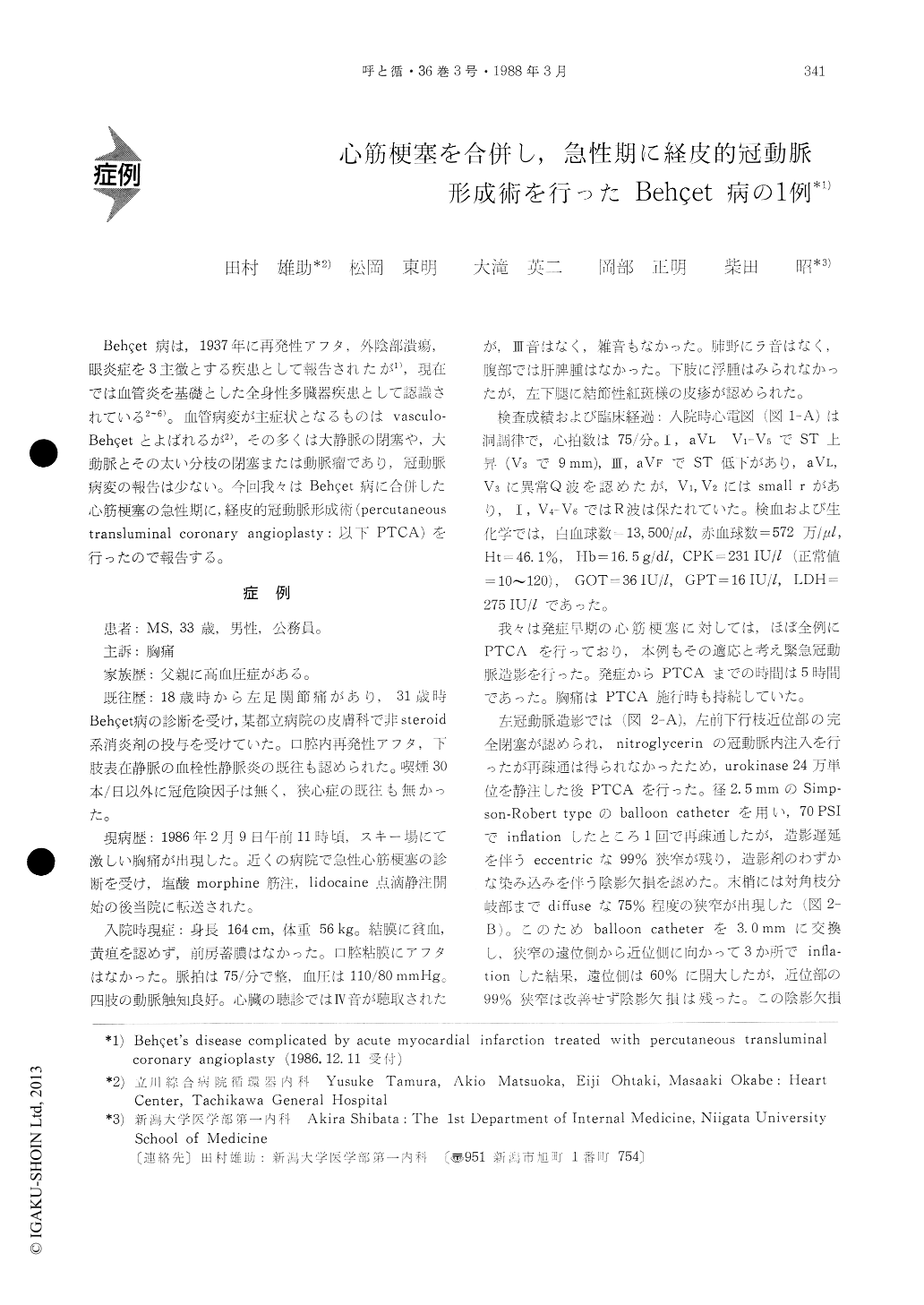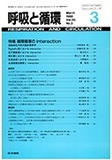Japanese
English
- 有料閲覧
- Abstract 文献概要
- 1ページ目 Look Inside
Behçet病は,1937年に再発性アフタ、外陰部潰瘍,眼炎症を3主徴とする疾患として報告されたが1),現在では血管炎を基礎とした全身性多臓器疾患として認識されている2〜6)。血管病変が主症状となるものはvasculo—Behçetとよばれるが2),その多くは大静脈の閉塞や,大動脈とその太い分枝の閉塞または動脈瘤であり,冠動脈病変の報告は少ない。今回我々はBehçet病に合併した心筋梗塞の急性期に,経皮的冠動脈形成術(percutaneoustransluminal coronary angioplasty:以下PTCA)を行ったので報告する。
A 33-year-old man, who had had recurrent ankle pain, aphthous stomatitis and superficial thrombo-phlebitis of legs since 18 years of age, had been diagnosed as Behçet's disease and treated with non-steroidal anti-inflammatory agents since he was 31. On Feb. 9, 1986 he suffered from severe chest pain at a ski area. He was refered to us after having been diagnosed as acute myocardial infarction at a community hospital. He had neither angina pectoris nor coronary risk factors other than smoking one and a half packs a day.
On arrival, he was in Killip class I, with a pulse rate of 75/min, blood pressure of 110/80 mmHg. ECG showed signs of evolving extensive anterior infarction. Serum CPK was slightly elevated to 231 IU/l.
Emergent coronary arteriography (CAG) revealed total occlusion of proximal left anterior descending artery (LAD). PTCA was performed following in-travenous urokinase, leaving an eccentric subtotal occlusion and an intraluminal filling defect at the initial site of occlusion. There appeared a diffuse 75% stenosis in mid LAD. Repeated inflations could not relieve the subtotal occlusion, though mid LAD was dilated to 60%. The filling defect seemed to be either a mural thrombus or a intimal dissection with a subintimal hematoma.
Chest pain suggesting reocclusion recurred soon after admission to CCU despite additional intrave-nous urokinase and heparin. However, hemodynamic status remained stable throughout the hospital course.
CAG one month later showed complete occlusion of proximal LAD at the distal end of the filling defect observed in acute phase, while the defect itself had been disappeared. Left circumflex and right coronary arteries were normal. Coronary aneurysms, coronary stenoses and myo-cardial infarctions are rare manifestations of Be-hcet's disease. Pathological findings suggest vascu-litis (coronary arteritis). Our present case may be the first who received CAG and PTCA during acute phase of myocardial infarction associated with Behcet's disease. Although distinction between arteritis and atherosclerosis is difficult to be made by CAG findings, the former cannot be ruled out since he was young and had no risk factors other than smoking. Inflammatory process in coronary artery might be one of the causes which have lead to failure of PTCA.

Copyright © 1988, Igaku-Shoin Ltd. All rights reserved.


